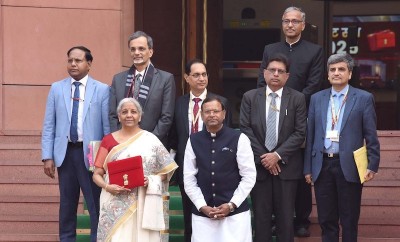 Investment
Investment
Analysis of International Economic Data to Identify Investment Avenues in India
Due to the interdependence of world economies, events and data releases around the globe play a major role in the movements of markets across the world, including India. By learning how to analyze such worldwide economic data, investors may more effectively indicate Indian market opportunities as well. Using interpretation of key indicators from major economies as a forecast of trends that affect Indian stock, commodity, and currency markets becomes possible.
Understanding Global Economic Indicators
These data—international economic data, inflation rates, and employment figures—and the resultant central bank policies—affect not only their home markets but also, to a large extent, the markets of other countries like India. For instance, when the U.S. Federal Reserve raises interest rates, capital outflows from India occur as investors seek better returns in the United States, which in turn depresses the value of the Indian rupee. Also, low growth forecasts from major economies like China have a bearing on Indian exporters, especially in manufacturing and IT.
Traders inform their decisions through any means that can provide them with real-time insight and analysis into what is going on around the world economically. Platforms like Exness Insight do a vital job in updating the market, providing forecasts based on global economic releases, and how such events might have an effect on the markets in India.
Impact of US Data on Indian Markets
The US is a big economy and any data released creates a ripple effect in markets across the globe, including India. When the US shows good job growth, higher-than-expected inflation, or a change in monetary policy, such factors tend to affect the inflow and outflow of money into emerging markets like India.
Indian traders closely follow U.S. economic data, especially around major releases like the Non-Farm Payroll report. This particular release gives a glimpse into the U.S. labor market, and any surprise in the numbers could result in sudden movement within the currency market. Strong NFP trading strategies would position a trader to leverage such volatility and simultaneously manage the risks associated with such unpredictable shifts in the market.
European Economic Data and Their Impact on Indian Markets
Europe is the hub of the international economy, and its data releases also have a marked effect on the Indian markets. Major economic indicators released by the European Union include GDP growth, inflation, and employment data, which govern the movement of European investors and the value of the euro. Since many companies in India have exposure to Europe, more so in the case of pharmaceuticals, auto, and technology, there is normally a ripple effect seen in Indian stock price movements whenever there is any fluctuation in the European data.
Decisions over policy actions by the European Central Bank add to market sentiments. A signal for monetary tightening or loosening from the ECB sends ripples through global capital flows. On the other hand, a move to tighten monetary policy in Europe can drive capital away from India and hit both equity and bond markets. Conversely, an accommodative monetary stance makes Indian assets appealing for European investors, thus pushing up stock prices and supporting the rupee.
Chinese Economic Data and Indian Market Opportunities
The Chinese economy is closely tied to India’s, particularly in sectors like manufacturing, textiles, and information technology. Economic data from China—trade balances, manufacturing output, and GDP growth—are basic indicators to look for opportunities in the Indian markets. When the Chinese economy is on overdrive, Indian exporters gain immensely from the demand for goods and services. On the other hand, when growth slows down in China, Indian companies that heavily rely on Chinese imports or exports witness lower revenues.
Commodity prices also tend to be responsive to the periodic economic data releases from China, particularly energy and metals. As a major importer of oil and other commodities, India’s markets are influenced by Chinese demand for those resources. When industrial production in China increases, for example, global oil prices surge and thus affect Indian inflation and, in turn, trickle down to the stock market as well. Indian traders can use research into reports on the Chinese economy to work out how fluctuations in the price of commodities will trickle down into the broader economy and, correspondingly, hedge positions.
Support Our Journalism
We cannot do without you.. your contribution supports unbiased journalism
IBNS is not driven by any ism- not wokeism, not racism, not skewed secularism, not hyper right-wing or left liberal ideals, nor by any hardline religious beliefs or hyper nationalism. We want to serve you good old objective news, as they are. We do not judge or preach. We let people decide for themselves. We only try to present factual and well-sourced news.







